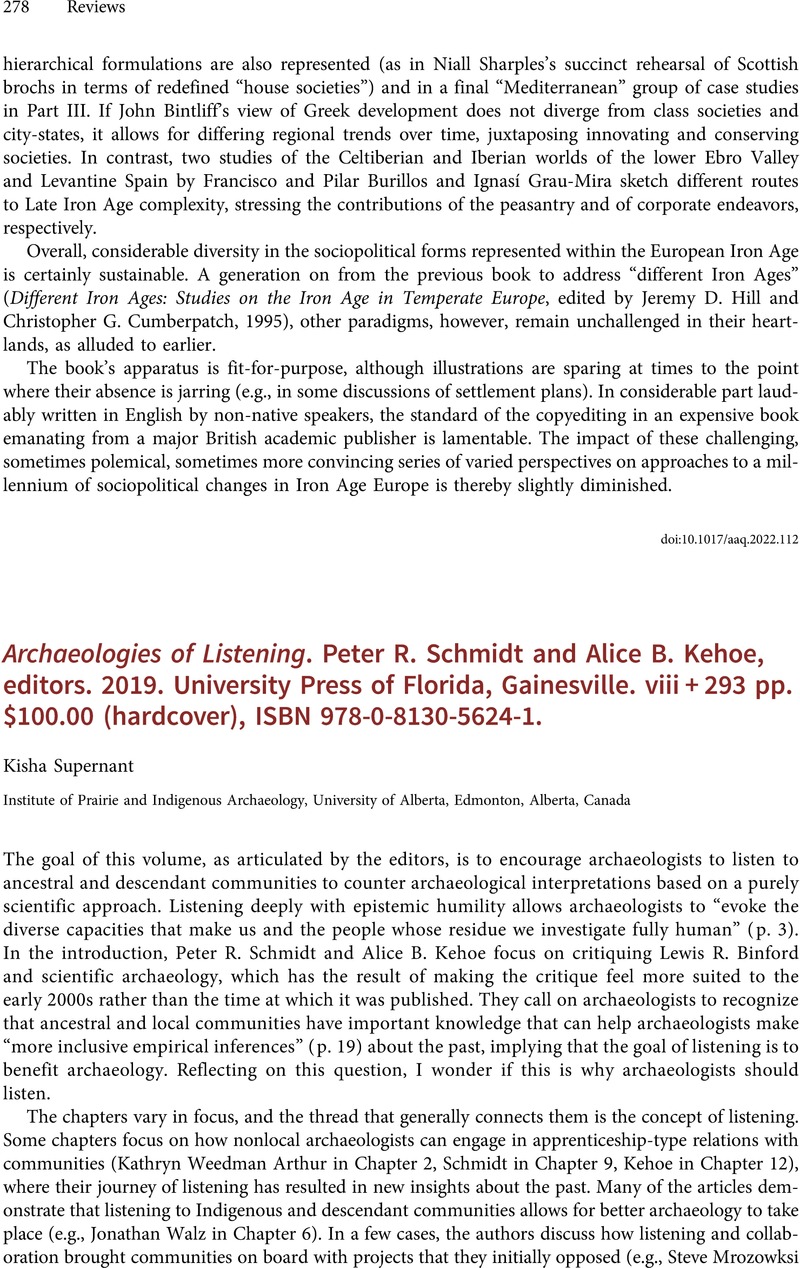No CrossRef data available.
Article contents
Archaeologies of Listening. Peter R. Schmidt and Alice B. Kehoe, editors. 2019. University Press of Florida, Gainesville. viii + 293 pp. $100.00 (hardcover), ISBN 978-0-8130-5624-1.
Review products
Archaeologies of Listening. Peter R. Schmidt and Alice B. Kehoe, editors. 2019. University Press of Florida, Gainesville. viii + 293 pp. $100.00 (hardcover), ISBN 978-0-8130-5624-1.
Published online by Cambridge University Press: 22 December 2022
Abstract
An abstract is not available for this content so a preview has been provided. Please use the Get access link above for information on how to access this content.

Information
- Type
- Review
- Information
- Copyright
- Copyright © The Author(s), 2022. Published by Cambridge University Press on behalf of the Society for American Archaeology

